To assert that the Germans could take Moscow in 1941
That was the OP
To assert that the Germans could take Moscow in 1941
That was the OP
Hello,
I'm trying to write a story taking place in late 1941 that takes place through the eye's of a German soldier, where Army Group Center is able to advance to Moscow and heavy street to street fighting takes place, in essence basically Stalingrad 2.0
I'm curious to know how would the attack turn out for Moscow as a whole, and who would win the battle, all information would be extremely helpful.
A point:
Knowing Stalin,the fall of Moscow would't be an excuse to actually start a new wave of purges?
Nah, they're great. You just don't like what the implications of their assessments mean for the result of the what ifs (even more catastrophic German defeat) so you claim their not great at it.
If you want to go around saying they are wrong please provide some form of evidence to support that not just one liners.
Kiev's liable to fall by the start of November at the latest even without AGC's diversion, the difference is how it falls: what probably happens is that the Southwestern Front gets levered out of the city and falls back to a new defense line a bit to the east and stops AGS there* instead of getting wiped out and giving AGS a free ride all the way to Rostov. It still leaves AGC in a early Typhoon onwith an egregiously exposed southern flank compared to OTL where they are even more overextended against a stronger Red Army.
Or that too, but even a voluntary Soviet withdrawal from Kiev to a new defense line somewhat to the east still leaves AGC in a massive salient right at the moment they have even more fatally overextended themselves compared to OTL. And success is a relative thing, seeing as an early Typhoon may breakthrough Soviet lines and kill a bunch of Russians and capture territory but less so then OTL.
I do not know much about Moscows layout though, but would German artillery, tanks, or tank destroyers be useful in the battle?No, this is the OP:
No where in there is the assertion that the Germans take Moscow. At most there is an unspoken question of whether the Germans could take Moscow if they had to engage in a urban street to street fight (answer: probably no).
In Barabrossa Derailed vol II, Glantz discuss the what-if scenario of dropping the southward strike and going directly for Moscow by among others stating:
"In short, if the German Army proved unable to protect its fronts and flanks in early December 1941 against a Red Army force of roughly 4.1 million soldiers, would it have done much better defending a significantly longer front in November against a Red Army force in excess of 6 million soldiers?"
Obviously, this is a severely flawed statement. If this is representative of Glantz's what-if-capabilities, he probably made the right decision in focusing on writing on other aspects of the conflict.
This was front Stolfi:I have a hard time visualizing how this egregiously exposed southern flank of AGC would look like. If its not too much to ask, would you care to illustrate with a map?
If Southwest front falls back to the Psel rive they are totally disconnecting from AG-Center's flank, while AG-South flows into to fill the vacuum from the Dniepr to the Psel, covering AG-Center's flank and freeing 2nd army to move further northeast to the Bryank-Orel area.Assuming the Southwestern Front re-establishes it's defences on the Psel river line, the 2nd Army would be strung out around 300 kilometers, roughly . Assuming the Soviets deploy even a quarter of the armies they had in the south against them and half of those they used in the OTL December offensive, they'll be facing nearly 8 armies when the Soviets attack. As to supplies, there would be multiple railheads running north from out of Kharkov, where the biggest depots for Soviet forces facing AGS prior to October were, and the Southwestern Front would still dispose of the bulk of it's plus whatever reinforcements it receives from the STAVKA. Furthermore, the lack of need to evacuate or destroy the industrial regions in the south with AGS stalling out so far to the west means there is a lack of need to evacuate them, allowing significant industrial output during the course of the autumn (instead of the pretty much collapse which occurred OTL), giving Soviet forces down there a relative wealth of munitions, weapons, and vehicles. The lack of needing to evacuate also frees up a lot of rolling stock.

There were innumerable reports of fuel shortages in late-August. For example, on August 20th, XXIV Panzer Corps informed Guderian that it was unable to capture Novzybkov for lack of fuel. When pressed, the corps reported that 3rd panzer division was almost out completely, 10th motorized division was having to abandon a number of trucks, and 4th Panzer had only two days worth. The main difficulty, as I said, was getting things forward: AGC needed a minimum of 24 trains a day in order just to cover day to day operations and was getting an average of 18. It wasn't until late-September that even partial stockpiling in the forward depots could be conducted and these partial stockpiles were what the historical Typhoon partly ran*, and ultimately failed, on.
That makes no sense given that the 'lateral territory' was still Soviet hands, had different gauged rail to be converted too, in the case of the Leningrad front was mostly swamp and was worse terrain and logistics than in the area east toward Moscow while the roads south toward Kiev were worse than the highways toward Moscow, and the same distance needed to be traveled. There was no short cuts for supplies headed to Smolensk then south to Kiev or north to Velyiki Luki. Only one Panzer Corps from 3rd Panzer Army was sent to AG-North during August-September that drew from it's supply lines, the rest that were aiding AG-North by attacking in the Toropets area to secure their flank along with Manstein's corps during and after the Soviet Staraya Russa offensive were drawing supply from AG-Center's supply lines.Everything else was done hand-to-mouth, which worked out for lateral movements which didn't increase the distance from railheads remotely as much as a direct move eastward would have.
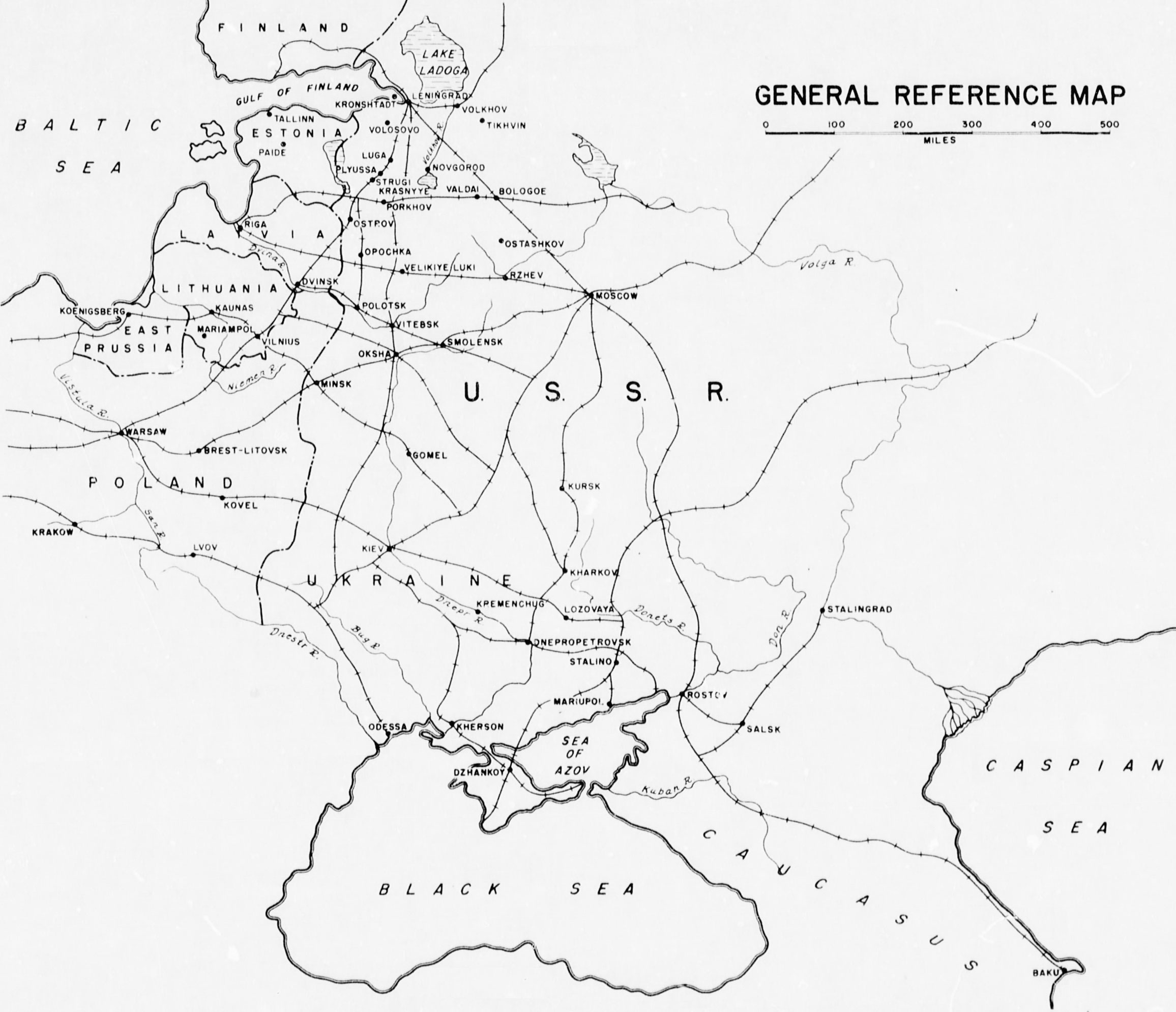
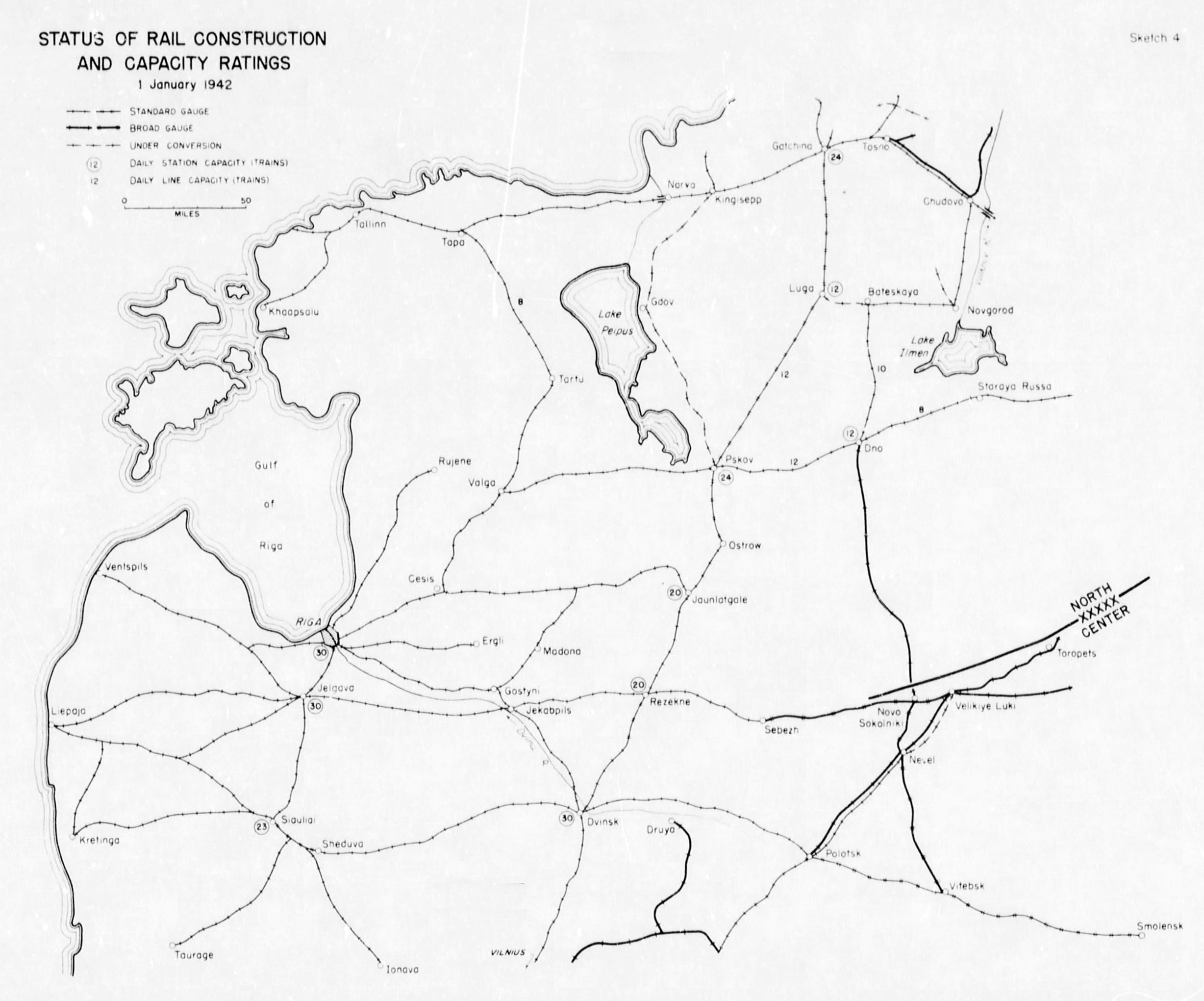

Not really, given that Guderian's supplies came via the Smolensk rail line IOTL, while other than one Panzer Corps from 3rd Panzer Army was sent to the Luga, 3rd Panzer Army spent August-September fighting within the supply area of AG-Center. 4th Panzer Group did fight within AG-North's supply area, but so to would start doing so in August 1941 in a Moscow scenario anyway, as they'd need to deal with the Soviet Staraya Russa offensive as per OTL, plus 22nd army around Velyiki Luki via the Dno area; that does nothing to AG-Center's supply lines, as that is from the AG-North area, while 18th army is operating in the Baltic/along the Luga, while 16th army is entirely along the Luga and in the Staraya Russa area, mostly sitting still and defending the flank of the operations. Their supply lines as you can see can above actually somewhat overlap with AG-Center, so if they are drawing less supply come September, as 18th army and 16th army would pretty much just be sitting still on the defensive holding the Luga/Staraya Russa flank, that means a significant part of their rail lines can instead host AG-Center trains headed via the Baltic lines south from Dvinsk-Veliyki Luki-Rzhev or Riga/Dvinsk-Vitebsk-Smolensk rather than the Orsha-Smolensk line. It actually heavily increases the amounts of supply that could be pushed into Smolensk from two converging rail lines. Beyond that without the push to Leningrad from the Luga in August-September AG-North rail conversion specialists can instead focus efforts on converting/repairing rail lines from the Baltic area to AG-Center's backyard, which improves their supply abilities compared to OTL.Given this context, the supplies dispatched on the Leningrad and Kiev axis would have simply sat around in the main dumps just west of the Soviet-German border had they tried to be sent down to AGC. The German advance would be radically slowed by the fuel difficulties as they outrun their supply lines a full month ahead of time and what encirclements would be achieved would net much fewer Soviet soldiers, with the bulk able to fall back to the next defensive line and join with the forces there. You are correct that the rains merely slowed Guderian, as by the time they occurred Guderian was facing little resistance in his immediate path. And the Soviet replacements are easy to find: the Soviets had formed 13 armies in July and another 14 in August. Of these armies, 11 were deployed along the Moscow axis in multiple defensive belts stretching as far back as Kalinin and Tula. A 12th army was formed extremely deep, north of Stalingrad, and could conceivably have been railed anywhere. A 13th army formed between Belogrod and Kursk could conceivably have been moved northward with little difficulty. And the lone army formed in September was also formed in the STAVKA reserve and could have wound up anywhere, although OTL it wound up in the Volkhov Front in November for some reason. And on top of all of it, the Germans would lack a immense number of soft advantages they accrued from the extensive September pause, like the detailed reconnaissance of Soviet front line positions they garnered.
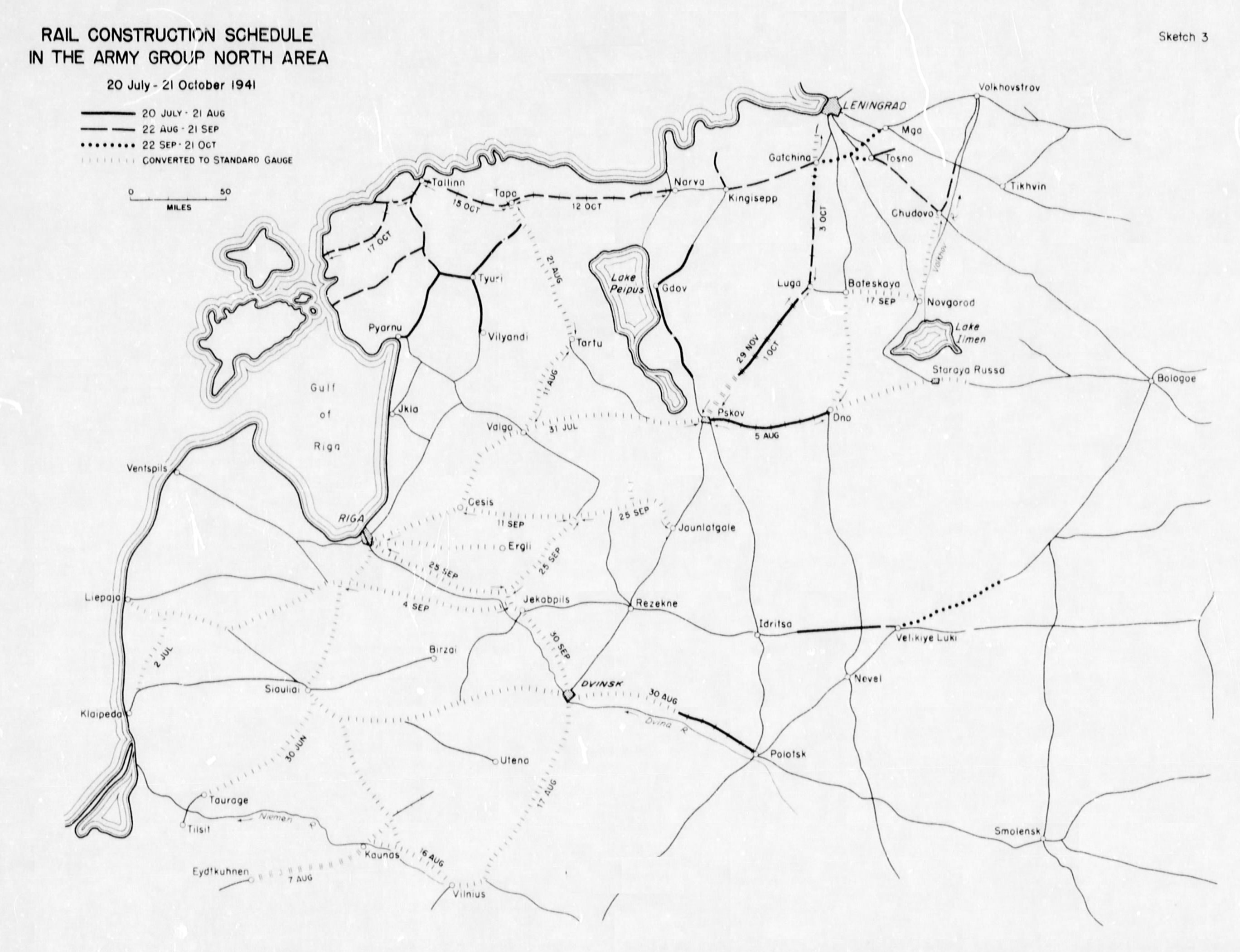
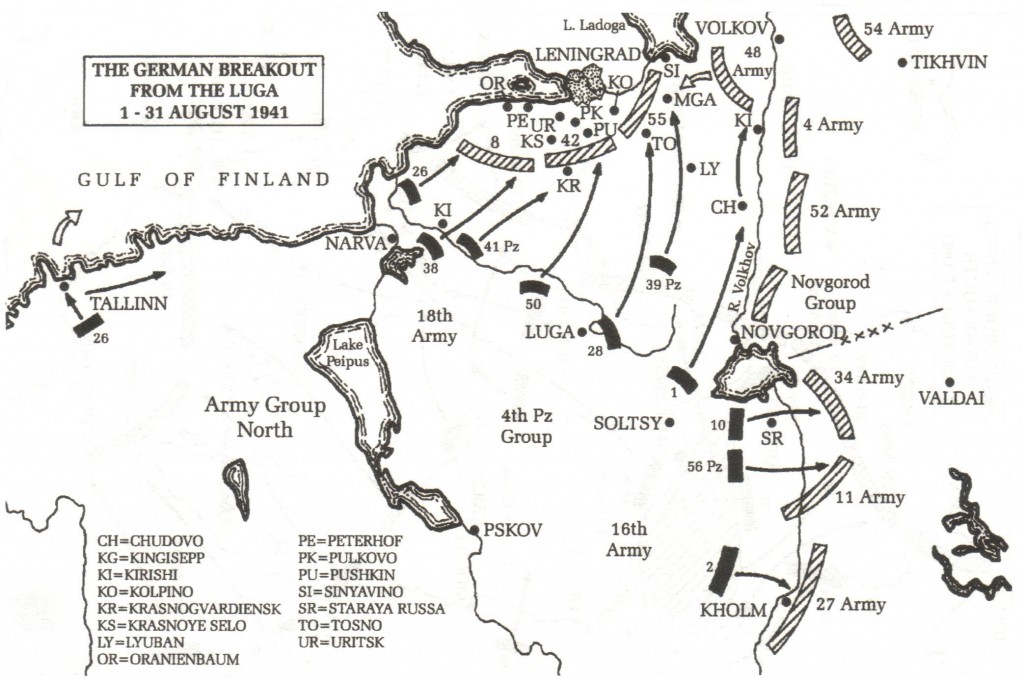
I see you also repeat the myth of pre-war formations Far Eastern formations holding the Germans along the Moscow axis. In reality, of the 14 divisions sent in the autumn, only 8 were assigned to the Western and Kalinin Fronts, which took part in the battle of Moscow. This out of something between 100-200 divisions that participated in the Battle of Moscow and it's easy to see that the bulk of the forces which halted the Germans in the end did not come from the Far East nor the pre-war.
So you acknowledge that Guderian was supplied via Smolensk for the entire operation? So as you yourself then acknowledge the supplies coming in to AG-Center were strong enough for Guderian to attack with 2nd army and 2nd Panzer Group on Kiev well over 100 miles south into enemy territory against multiple Soviet armies, while still holding Yelnya into September. At the same time 3rd Panzer Group was attacking 22nd Army at Velyiki Luki and broadly the infantry armies of AG-Center were defending against multiple Soviet offensives against Smolensk from July-September, quite successfully too. There was clearly plenty of supplies coming in for all of those operations, all that is being suggested is that those supplies are instead used to advance East instead of the historical fighting along the Smolensk-Moscow axis. Plus in August-September 4th Panzer Group would have to fight along the Dno-Staraya Russa axis on AG-North's supply lines to defeat the Soviet offensive there, before turning south from the Valdai hills area to push on Rzhev, while 3rd Panzer Group stays intact in August and with VIII air corps' support pushes against the Soviet 22nd and 29th armies at the same time 4th Panzer Group is pushing around Staraya Russa and Kholm against the Northwest Front. By September, then have secured the army group flanks, 4th Panzer Group could turn on Rzhev from their northern position, while 3rd Panzer Group, having destroyed 22nd and 29th armies in August and in September use their positions to flank attack the Soviet 30th army from their positions in conjunction with 9th army, while Guderian can attack with his 2nd Panzer army and 4th army from the Yelnya area against the 24th, 19th, and any sundry Soviet armies in that area to rip open the front and start the push on Moscow.Initially a rail line coming off the Minsk-Orsha route. Even then, the whole advance was committed hand-to-mouth and encountered only a fraction of the resistance compared to what an advance toward Moscow would have entailed, which alleviated much of the demand. And even then it still, by Guderian's own admission, proved to be a close-run thing. In the end though, he indeed was able to draw off AGS when he had linked up with them. Guderian proved unable to clean-up his own flanks at the Yel'niya bridgehead for a solid month and his supply situation only improved when he pulled his forces back from the front for the transfer down to Gomel for the Kiev operation, which allowed his forces to restock enough to breakthrough the thin Soviet lines in that direction. As the Germans, by your own admission, would not be using any other road networks then what they used OTL and what they used OTL was inadequate to support continued offensives in late-August/early-September, it's pretty much going to result in a insta-logjam.
In the end, the forces AGC dispatched to other fronts, Guderian included, constituted but a fraction of the entire Army Group and by extension demanded a fraction of the resources that moving the whole thing would have required. It says everything that the greater part of the whole had to sit immobilized while all the flank battles were happening, which was a godsend for them as it gave them an opportunity to rest and refit.
They are great at collating data, not terribly great at what ifs given the depth I've seen them putting into such forays that they'd made, like the one liner Per70 mentioned. Beyond that Glantz doesn't even deal with the political, economic, psychological implications that come from Moscow being reached in either August/September or October and what it's fall would mean. There is a ton of disruptions just in communication from the city becoming either a battleground or falling that neither address, but as it is neither author really does much beyond describing what happened IOTL, not what could have happened with different choices.Nah, they're great. You just don't like what the implications of their assessments mean for the result of the what ifs (even more catastrophic German defeat) so you claim their not great at it.
The flank moves only used a fraction of AGC's forces, were much less demanding, and the rest of AGC's front was quiet for the majority of September. Additionally I should observe that the idea that the Germans could not take Moscow in 1941 in the face of the combination of Soviet resistance and German logistical difficulties is not just that of modern scholars, but also that of the German quartermaster staff before and during Barbarossa. To assert that the Germans could take Moscow in 1941 given their logistical difficulties and Soviet resistance, you are therefore not only flying in the face of current scholarship but in the face of the exact people. In this, you are very much following in the footsteps of the German generals at the time, who at best rationalized their quartermasters concerns away and at worst ignored them. I have remarked many a times in the past that you belong in OKH for a number of reasons, here is another one.
If we limit the discussion to just OTL Typhoon, then if the Germans can reach the city in October, there isn't anything left in the city to really engage in a massive street fight. Now in November that's a different story, but I don't see how it is remotely possible for the Germans to reach the city by then due to the pause in operations and arrival of so many Soviet reserves. At that point it's too late unless there was an earlier POD that prevents Soviet reserves from arriving and manning the front in front of Moscow....but then that gets us back to the fact that if there wasn't enough manpower to stop the Germans short of Moscow, what reserves exist within the city that were held back to fight them in it?Talking about the end result of a early Typhoon that bogs down in urban fighting in western Moscow in October or November, which is liable to be the best case of a early-Typhoon, is very much in the spirit of the OP. If you want to talk about a early-Typhoon which actually takes Moscow somehow, probably by inducing a improbable but still possible panic among the leadership in Moscow, then start your own thread.
There was an ongoing purge at the time that was slowing down over the course of 1941:I'm still seeing no evidence of any purges that were initiated by any of the innumerable disasters suffered after July. Or in mid-'42 when the Soviets suffered a further string of disasters that at time rivalled that . While I agree that Moscow is altogether something different, Stalin would probably be the one most to blame if it fell (since it would pretty much require him panicking and flat out ordering the city abandoned) and would have his hands full holding together the country in the aftermath so I'm having a hard time seeing him kick off another.
During the first months of the war, scores of commanders, most notably General Dmitry Pavlov, were made scapegoats for failures. Pavlov was arrested and executed after his forces were heavily defeated in the early days of the campaign. Only two of the accused were spared: People's Commissar of Armaments Boris Vannikov (released in July) and Deputy People's Commissar of Defense General Kirill Meretskov (released in September). The latter had admitted guilt, under torture.[2]
About 300 commanders, including Lieutenant General Nikolay Klich, Lieutenant General Robert Klyavinsh, and Major General Sergey Chernykh, were executed on October 16, 1941, during the Battle of Moscow. Others were sent to Kuybyshev, provisional capital of the Soviet Union, on October 17. On October 28 twenty were summarily shot near Kuybyshev on Lavrentiy Beria's personal order, including Colonel Generals Alexander Loktionov and Grigory Shtern, Lieutenant Generals Fyodor Arzhenukhin, Ivan Proskurov, Yakov Smushkevich, and Pavel Rychagov with his wife.[2]
In November Beria successfully lobbied Stalin to simplify the procedure for carrying out death sentences issued by local military courts so that they would no longer require approval of the Military Collegium of the Supreme Court and Politburo for the first time since the end of the Great Purge. The right to issue extrajudicial death sentences was granted to the Special Council of the NKVD. With the approval of Stalin, 46 persons, including 17 generals, among them Lieutenant Generals Pyotr Pumpur, Pavel Alekseyev, Konstantin Gusev, Yevgeny Ptukhin, Nikolai Trubetskoy, Pyotr Klyonov, Ivan Selivanov, Major General Ernst Schacht, and People's Commissar of Ammunition Ivan Sergeyev, were sentenced to death by the Special Council. They were executed on the Day of the Red Army, February 23, 1942.
'Obviously this is wrong' is an assertion of your point of view not evidence.
Relevant map from Glantz Barbarossa:"One potential option, that Glantz actually mentions in his Barbarossa book, is the Germans not diverting 3rd Panzer Army to Kalinin in October, instead pushing East from Rzhev north of the Moscow river and 4th Panzer Army's push south of it, which would effectively 'double fist' the push along two parallel highways and overload Soviet defenses. In that case the Soviets have the severe problem of their front collapsing in either one, the other, or both at the same time due to trying to defend too much, which then results in the Germans arriving in Moscow right around the time of the Moscow Panic. There is no street fighting then, Soviet reserves are gone, what they had was at the front, and the public is panicking and NKVD doesn't have a chance to restore order."
This seems like the most realistic "bring the battle to Moscow" option. That is a more focused push which gives up the whole encirclement combined with AGN of the entire Soviet front between Leningrad and Moscow and winning the war in 1941. It would take a more sober assessment of German capabilities at time.
Both those highways were paved if I remember correctly which would be important once the rains come.
If the Germans can take Moscow's Vnukovo airport (west of the city) with it paved runways it starts canceling some logistic advantages the Soviets have operating close to Moscow. Even if that is as far as they get they may be in a better defensive position than OTL December 6th.
It seems if the Soviet can stop the panic (likely). Moscow is such a huge city, it seems local police, NKVD, whatever militia and remnants can be scraped up could make city fighting messy (sort of Berlin 45 like).

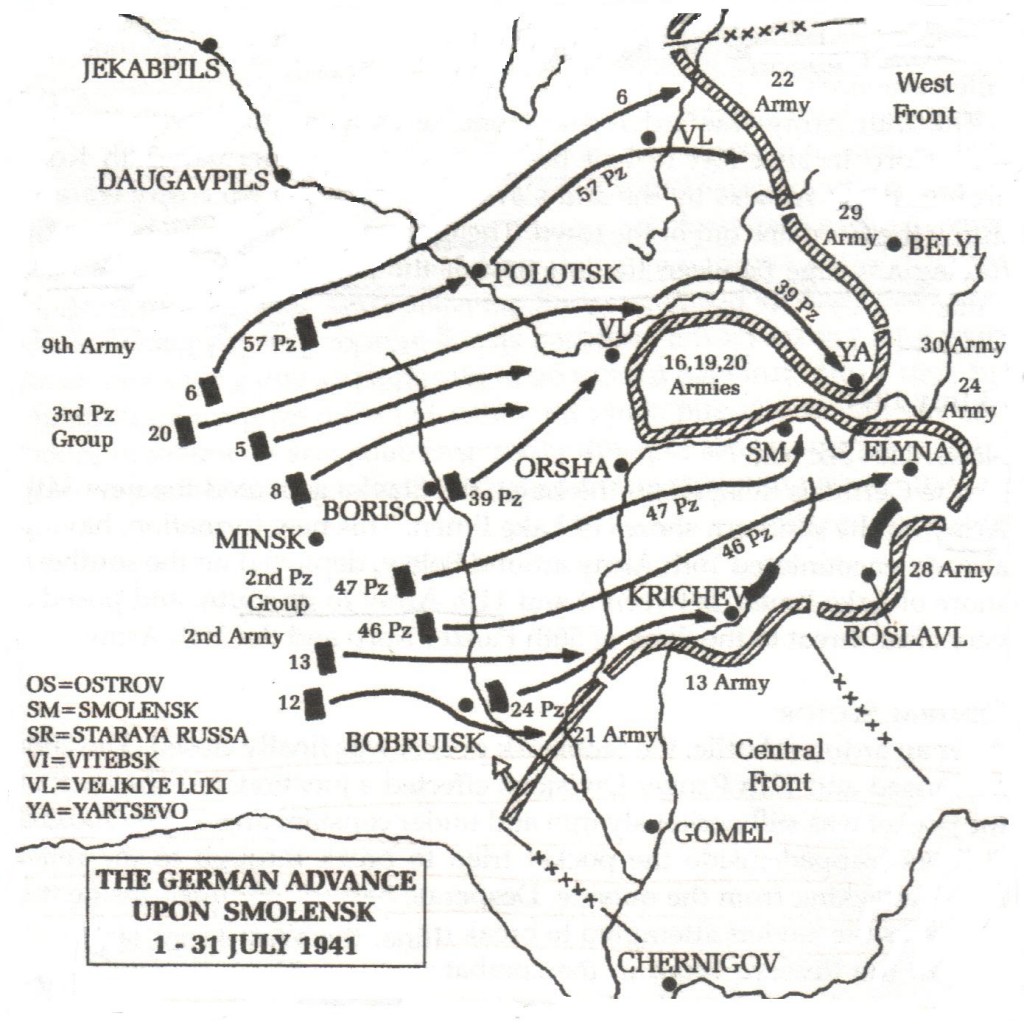
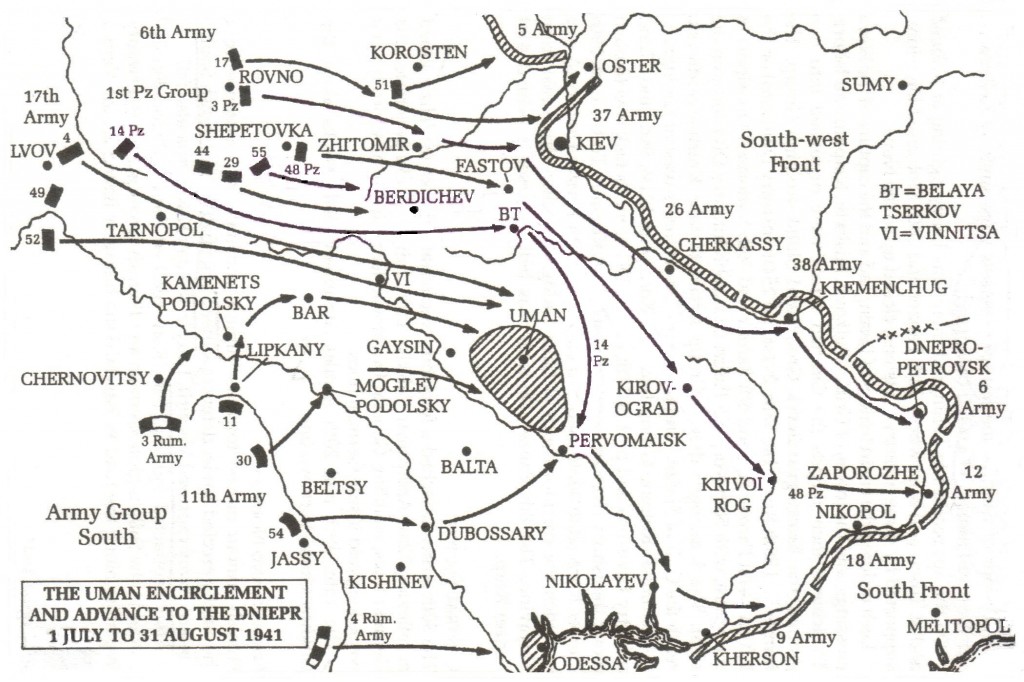
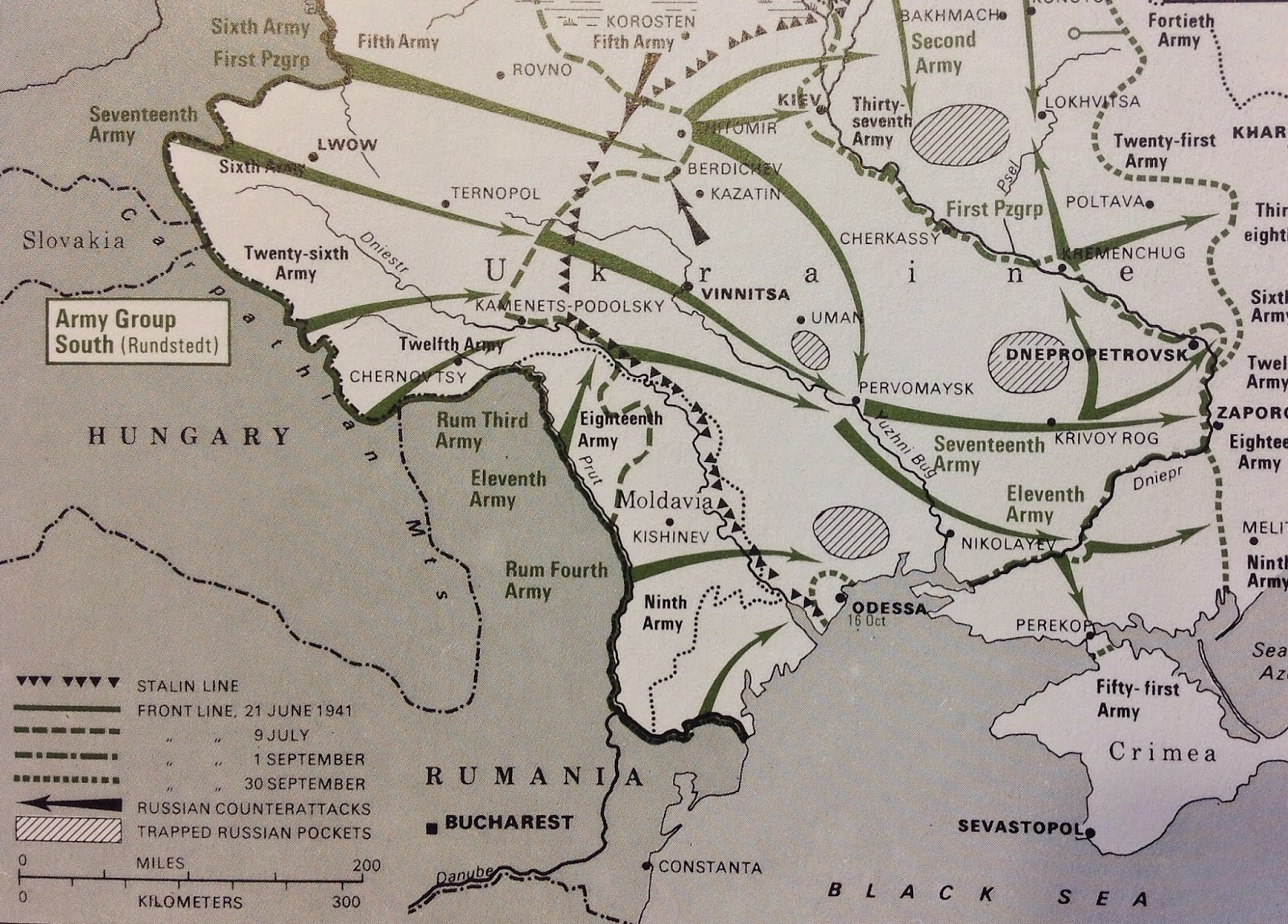
To operate the rail lines, the Germans had to regauge rail sidings and marshalling areas and, depending on battle damage, to repair buildings and equipment at the train stations.{14} On the most important rail line in Barbarossa, the tracks from Brest directly toward Moscow, the Germans completed the line from Brest to Oranczyce by 29 June 1941 and began to move German trains on normal-gauge track on 30 June. That day. four supply trains arrived at Oranczyce, 85 km into the Soviet Union, with approximately 2,000 tons of supplies. Meantime, regauging of Russian lines continued with work being completed to Baranovice junction by 2000, I July, and three trains reaching that city, 210 km into the Soviet Union. The Germans continued their impressive pace of building a normal-gauge rail system into White Russia and completed regaug-ing from Brest to the capital, Minsk, at noon on 5 July. Army Group Center ran four supply trains there the same day, more than 330 km into the Soviet Union.{15} By 5 July, the Germans began to develop a great rail head at Minsk, which capably supported the lightning panzer advance to Smolensk that overran the city on 16 July. In a historic performance, the Germans regauged the Russian rail system from Brest to Minsk by early July and extended construction to Smolensk before the end of the same month. Their performance established a logistical system able to support an offensive toward Moscow before the middle of August 1941 and bridge the gap between Smolensk and Moscow in a single offensive, similar in style to the earlier leaps to Minsk and Smolensk.
That generalization derives from the actions of Army Group Center from the middle of July to early August 1941. On 15 July 1941, the quartermaster general reviewed the supply status of, Army Group Center in terms of its capabilities to continue offensive operations. He made it clear that the great rail head for continuing operations lay in the cities of Minsk and Molodecno, no longer on the prewar frontier. The army group then had 45,450 tons of 60-ton truck columns and, deducting one-third as inoperable at any time and in repair, still had approximately 30,700 tons available for continuous operations.{16} In mid-July 1941 the German army transportation chief guaranteed the substantial total of fourteen trains and 6,300 tons of supplies daily for the Minsk-Molodecno base. The quartermaster general averred that, based on the logistical situation of 15 July 1941, Army Group Center could conduct an offensive on Moscow with four panzer, three motorized infantry, and ten infantry divisions with appropriate army reserves, maintaining the remainder of the army group in static fighting around Smolensk. This logistical feat was moderately impressive for the middle of July, with enough trains arriving at the Minsk-Molodecno railroad and more than enough trucks to move a panzer group and an infantry army to Moscow. Meanwhile, the Germans were fighting the battle of Smolensk and would take two more weeks to finish the job and another week to tidy up operationally. The Germans used this time to build up logistic stockpiles at the rail head in the center of White Russia and regauge the main rail line from Minsk through Orsha into Smolensk{17}.
By the second week of August 1941, Army Group Center regained operational freedom of movement. If the army group had been directed by Hitler and OKH at the end of July 1941 to continue operations toward Moscow as soon as possible, it would have eliminated remnants of Soviet forces in the great pocket just north of Smolensk and cleared the communications zone of Panzer Group Guderian to the south. Unhampered by Hitler's stubborn attempt to diffuse the combat strength of Army Group Center about the Russian countryside, and the battle between the Fuhrer and OKH over one decisive objective rather than many indecisive ones. Army Group Center would have entered a period of rest, rehabilitation, and stockpiling on approximately 5 August 1941. Regarding the logistical possibilities for an advance a little over a week later, on 13 August 1941, Army Group Center would receive almost double the number of trains daily it had received a month earher{18} — approximately twenty-four trains rather than fourteen. With time to establish larger stockpiles, and with rail heads advanced to Orsha and Smolensk, Army Group Center obviously had the logistical system to support its advance on Moscow with its entire strength{19}.
14. The additional track would comprise a substantial 15 percent over and above the track constructed among cities. See, for example, the mileages in Gen. d. Eisb. Tr. Aus-schnitte. Stand derStreckenwederherstellung. 1941-1942. U.S. NationalArchives. Records. German Army High Command. Microcopy T-78, Roll 117. Fr. 6041049.
15. Eisenbahntruppen. U.S. National Archives, German Army High Command. Microcopy, T-78. Roll 113, Fr. 6035898. See also Bock. Tagebuchnotizen Osten 1. p. 13.
16. See Halder. Diaries, vol. 6, p. 241.
17. Note the use of the rail system through Orsha. Vitebsk, and Smolensk in the first half of August 1941 in Generalma)or Windisch, Personal Diary of the German 9th Army Supply Officer German Language Copy) (from 1.8.1941-31.1.1942Ë5 February 1954), p. 7. U.S. Army, European Command, Historical Division, MS P-201.
18. See Halder, Diaries, vol. 6, p. 248. in which fourteen trains are noted as available for Army Group Center as of 18 July 1941, and Halder. Diaries, vol. 7. pp. 25. 26, in which twenty-four trains daily are noted as running to supply the center after 7 August 1941.
19. As early as 12 July 1941, the quartermaster general of the German army noted in a telephone call to the chief of staff that Army Group Center had enough supplies to maintain an armored drive to Moscow. He also notes that the infantry had only enough to get to Smolensk. It follows that as early as 12 July, the Germans were close to having logistics under control for a push almost straight through to Moscow. See Halder. Diaries, vol. 6. p. 231.